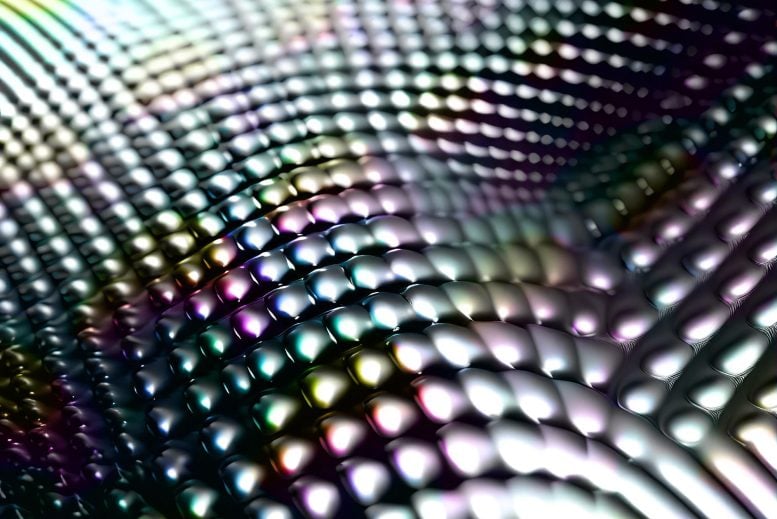
Scientists from the RIKEN Center for Emergent Matter Science and colleagues have successfully developed a “superlattice” of semiconductor quantum dots that can function similarly to a metal. The new material’s conductivity was found to be one million times greater than existing quantum dot displays, while the quantum confinement of individual dots remained. The team predicts significant improvements in quantum dot superlattice capabilities and potential new applications like true all-QD direct electroluminescence devices, electrically driven lasers, thermoelectric devices, and highly sensitive detectors and sensors.
Scientists have developed a superlattice of semiconductor quantum dots that functions like a metal, a significant leap forward in harnessing quantum dots’ full potential. The researchers achieved metal-like conductivity in this lattice, one million times greater than current quantum dot displays, without compromising quantum confinement. This advancement could revolutionize quantum dot technology, enabling new applications in electroluminescence devices, lasers, thermoelectric devices, and sensors.
Researchers from the RIKEN Center for Emergent Matter Science and collaborators have succeeded in creating a “superlattice” of semiconductor quantum dots that can behave like a metal, potentially imparting exciting new properties to this popular class of materials.
Semiconducting colloidal quantum dots have garnered tremendous research interest due to their special optical properties, which arise from the quantum confinement effect. They are used in solar cells, where they can improve the efficiency of energy conversion, biological imaging, where they can be used as fluorescent probes, electronic displays, and even quantum computing, where their ability to trap and manipulate individual electrons can be exploited.
However, getting semiconductor quantum dots to efficiently conduct electricity has been a major challenge, impeding their full use. This is primarily due to their lack of orientational order in assemblies. According to Satria Zulkarnaen Bisri, lead researcher on the project, who carried out the research at RIKEN and is now at the Tokyo University of Agriculture and Technology, “making them metallic would enable, for example, quantum dot displays that are brighter yet use less energy than current devices.”
Now, the group has published a study in Nature Communications that could make a major contribution to reaching that goal. The group, led by Bisri and Yoshihiro Iwasa of RIKEN CEMS, has created a superlattice of lead sulfide semiconducting colloidal quantum dots that displays the electrical conducting properties of a metal.
The key to achieving this was to get the individual quantum dots in the lattice to attach to one another directly, “epitaxially,” without ligands, and to do this with their facets oriented in a precise way.
The researchers tested the conductivity of the material they created, and as they increased the carrier density using a electric-double-layer transistor, they found that at a certain point it became one million times more conductive than what is currently available from quantum dot displays. Importantly, the quantum confinement of the individual quantum dots was still maintained, meaning that they don’t lose their functionality despite the high conductivity.
“Semiconductor quantum dots have always shown promise for their optical properties, but their electronic mobility has been a challenge,” says Iwasa. “Our research has demonstrated that precise orientation control of the quantum dots in the assembly can lead to high electronic mobility and metallic behavior. This breakthrough could open up new avenues for using semiconductor quantum dots in emerging technologies.”
According to Bisri, “We plan to carry out further studies with this class of materials, and believe it could lead to vast improvements in the capabilities of quantum dot superlattices. In addition to improving current devices, it could lead to new applications such as true all-QD direct electroluminescence devices, electrically driven lasers, thermoelectric devices, and highly sensitive detectors and sensors, which previously were beyond the scope of quantum dot materials.”
Reference: “Enabling Metallic Behaviour in Two-Dimensional Superlattice of Semiconductor Colloidal Quantum Dots” by Ricky Dwi Septianto, Retno Miranti, Tomoka Kikitsu, Takaaki Hikima, Daisuke Hashizume, Nobuhiro Matsushita, Yoshihiro Iwasa and Satria Zulkarnaen Bisri, 26 May 2023, Nature Communications.
DOI: 10.1038/s41467-023-38216-y
In addition to RIKEN, the team included researchers from Tokyo Institute of Technology, the University of Tokyo, SPring-8, and the Tokyo University of Agriculture and Technology.

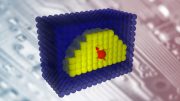
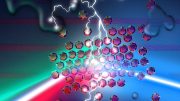

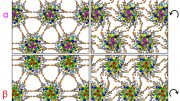

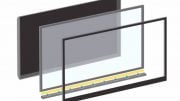
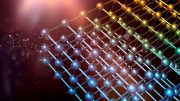
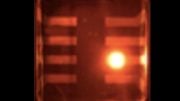
Be the first to comment on "Metallic Magic: Forging a Dream Material With Semiconductor Quantum Dots"